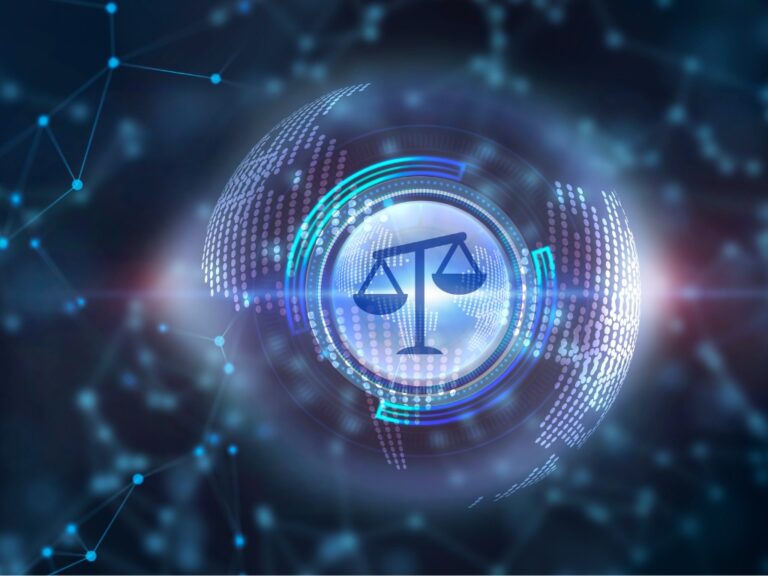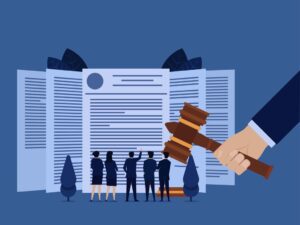Reflecting on Litigation Technology’s Evolution: An EDiscovery Analyst’s View
By Milton Hooper
October 15, 2024

Milton Hooper is a Senior Discovery Analyst at iDS (iDiscovery Solutions) with extensive expertise in eDiscovery, IT, and litigation support. His background includes a distinguished tenure at the United States Attorneys’ Office.
Published in Today's General Counsel, October/November 2024
Two years ago, I stepped away from my role as a litigation technology specialist with the United States Attorneys’ Office. It marked the end of a remarkable journey—a journey that allowed me to witness the profound transformation in litigation technology and eDiscovery firsthand. Picture this: back in the day, we were knee-deep in banker’s boxes, manually applying Bates labels while battling flatbed scanners and wrestling with Microsoft Access databases. Fast forward to today, and we’re riding the digital wave, leveraging AI and cloud computing to manage terabytes of data with just a few clicks.
Reflecting on my journey, it’s incredible to see how far we’ve come. Those early days were defined by the tedious task of scanning endless paper documents, where entire rooms were filled with cases. Now, we seamlessly process colossal volumes of digital data. The frantic rush to copy files for opposing parties feels almost nostalgic.
From Diskettes to Cloud
I still remember my first encounter with a document database on an all-in-one PC with an optical disc drive. It was a game-changer. We swiftly transitioned from diskettes to CDs, DVDs, Blu-ray discs, and then to flash drives and external hard drives, finally embracing the limitless potential of the cloud. I even engineered a “credit card” style flash drive to streamline our tracking and return systems. Innovation was the name of the game, and complacency was never an option.
In fact, I was never content with the status quo. I always sought more efficient ways to serve justice, unafraid to explore new ideas. Not every attempt hit the mark, but each step forward represented progress. The infusion of young, tech-savvy talent brought a fresh wave of energy and creativity, igniting our collective efforts. Navigating the bureaucratic red tape of a government agency presented its challenges, but it was crucial for driving meaningful change.
My career, punctuated by memorable moments and colorful characters, earned me many accolades from defense attorneys and even a few defendants. One instance stands out: a captivated defendant during a recess expressed interest in purchasing the technology I was using—unless, of course, he ended up in jail. Spoiler alert: he did. Another memorable moment featured a defense attorney complementing our technology while his client echoed, “Yeah, that was cool.” He too found himself on the wrong side of the law.
The Emergence of EDiscovery
The emergence of eDiscovery in the latter years of my career marked a watershed moment, underscoring the critical importance of preserving and processing electronic data. Convincing veteran prosecutors, who were accustomed to hard copies, to embrace eDiscovery was no small feat. Thankfully, many adapted, empowered by a new generation of tech-savvy prosecutors. Education was non-negotiable—training legal staff in eDiscovery became the principal step toward overcoming challenges and achieving success.
We’ve come a long way from flatbed scanners to today’s AI-driven solutions. As the landscape continues to evolve, collaborating with eDiscovery experts is increasingly important. Their technical acumen and insights into modern data management are invaluable.
Adapt Proactively
Litigation, technology, and eDiscovery continue to advance at breakneck speed. It’s not just about sticking with one tool but cultivating a mindset of continuous innovation and adaptability. While change can be challenging and often meets resistance, it’s crucial to embrace proactive adaptation. Those who work alongside eDiscovery specialists are better equipped to guide their practices through these transitions, ensuring effectiveness in a complex legal environment.
As organizations welcome the shift toward advanced litigation technologies, collaboration with eDiscovery experts becomes a necessity. Legal teams should foster a culture of shared expertise, as innovation thrives in an environment of collective knowledge. By integrating eDiscovery specialists into their strategies, legal professionals can tap into their prowess in preserving, collecting, analyzing, and presenting evidence. This collaborative approach ensures teams have access to advanced methodologies, effectively mitigating risks and maintaining evidence integrity.
Investing in specialized eDiscovery expertise may seem like a hefty expense upfront, but the dividends are substantial. Precision, efficiency, and strategic risk management can be the difference between a case won and an opportunity missed. By adopting best practices, legal teams can remain ahead of the curve, leveraging cutting-edge technologies to streamline your operations. For those committed to legal excellence, championing innovation is not just beneficial; it leads to more favorable outcomes and fosters a stronger, more resilient practice.
Never Stop Learning
Having witnessed the relentless evolution of litigation technology from managing physical evidence to adopting cloud-based solutions, I can attest to the impact of having the right tools. Today’s litigation landscape is characterized by a rapid pace, which makes exceeding client expectations essential. Legal professionals must prioritize innovation and adaptability, actively pursuing opportunities for growth and learning in emerging technologies. Integrating advanced litigation solutions isn’t a solo act but a collective effort. When we collaborate and leverage each other’s strengths, we witness the impact of justice unfold, revealing the difference we can make together.
The bottom line: embrace change or risk falling behind.
Must read intelligence for general counsel
Subscribe to the Daily Updates newsletter to be at the forefront of best practices and the latest legal news.
Daily Updates
Sign up for our free daily newsletter for the latest news and business legal developments.




